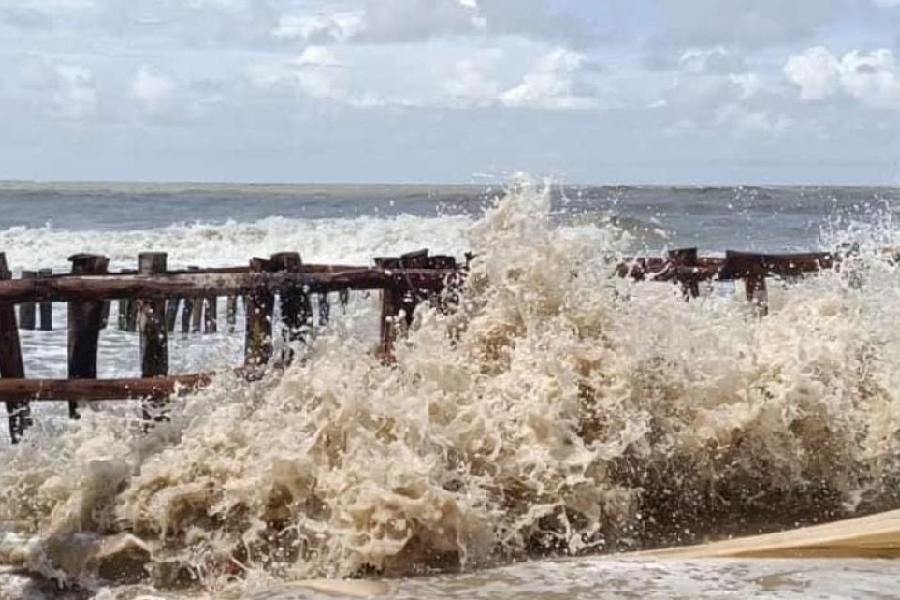The Bengal government has heaved a sigh of relief after the initial assessment of the impact of Cyclone Remal revealed only minor damage to embankments at 410 places in 19 blocks of Sunderbans and six adjoining riverine blocks in South 24-Pargnas and North 24-Parganas.
“Although river embankments were damaged at 410 places in 25 Sunderbans blocks and the adjoining areas, there were no reports of any major breach.... Water had sipped and splashed over the earthen embankments in many areas, but there was no large-scale inundation. The cyclone passed off without any major damage as the water level of the rivers did not rise dangerously,” said a senior official in the irrigation department.
“The situation could have been far worse if the embankments had been breached even at a few places. Nearly two lakh people were evacuated to safer places. We are running 1,400 relief camps in three coastal districts — South 24-Parganas, North 24-Parganas and East Midnapore — for those who were evacuated from low-lying areas,” said another state government official.

An uprooted tree blocks the road in Bashirhat, North 24-Parganas, on Monday. Pashupati Das
Sources in the irrigation department said they had been particularly worried about the embankment at Atapur in Sandeshkhali, North 24-Parganas, as it became vulnerable since the high tide coincided with the landfall of the cyclone, between 8.30pm on Sunday and 1am on Monday.
“But the dyke was saved as the water level did not rise as expected.... We are still keeping an eye on the situation. We are hopeful that the dyke will not collapse this time,” said a source.
Senior officials in the irrigation department said the embankments were not damaged severely primarily because the water level of the rivers rose to only 0.7 metres to 0.8 metres in those areas.
“The situation could have been worse if the direction of the wind was easterly. Luckily, this time, the wind was westerly,” said an official explaining that the damage could be much more on the Bangladesh side of Sunderbans as the water level rose there between 2.5 meters and three meters.
When Cyclone Amphan hit Sunderbans in May 2020, the situation was worse as the rivers had risen to 4.5 metres and stretches of embankments for a combined length of 125km were either severely damaged or washed away.
“Hundreds of villages had been inundated and lakhs of people had to be shifted to a safer place in 20202. This time, the cyclone left little impact because the state government had repaired the embankments damaged by Amphan with utmost urgency by spending more than ₹200 crore,” said an official.
The irrigation department officials said they were trying to get all details from the areas affected by Remal as soon as possible so that they could assess the damage to the embankments. “Although the embankments survived the cyclone this time, they have become weak at many spots. These have to be repaired immediately to keep the areas safe during the monsoon,” an official said.
Sources said the state government had already prepared a master plan for strengthening and raising the embankments in Sunderbans to save the delta from regular natural disasters.
The plan had been submitted to the Centre for financial assistance soon after Cyclone Amphan, but funds haven’t been released. “Only 10 to 15 per cent of the embankments in Sunderbans can withstand cyclones…. The state would require at least ₹1,500 crore to make the remaining embankments strong and it is not possible for a cash-strapped government to spend such a handsome amount,” said an official.











